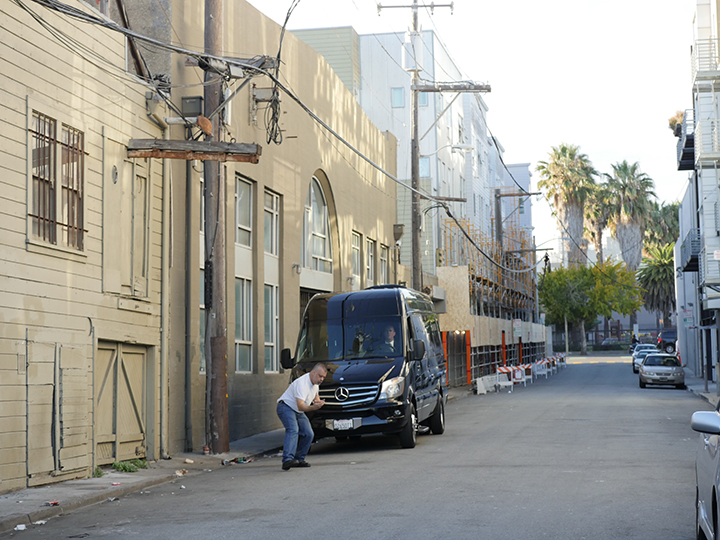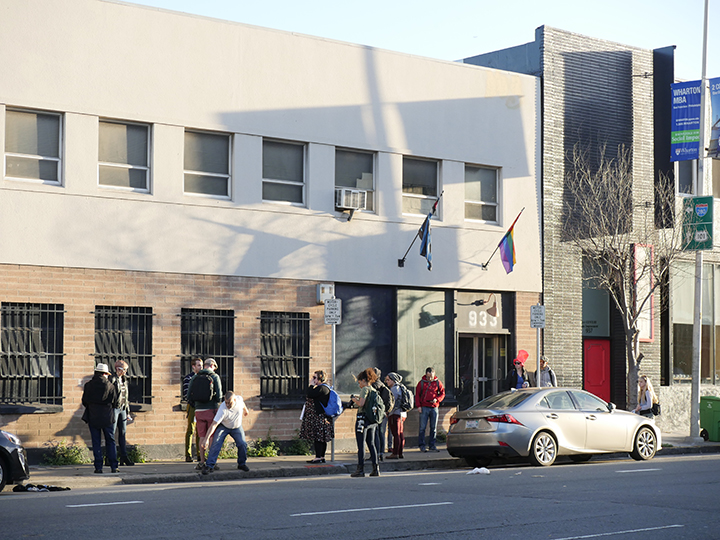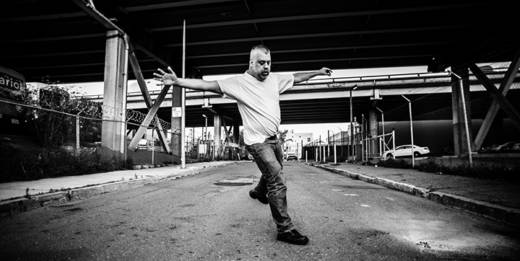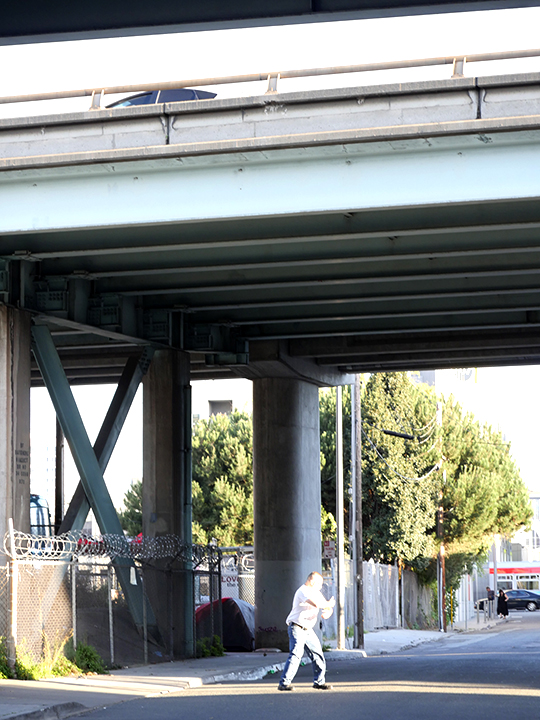SOMA Now and Then is a walking tour made out of movement and memoir, leading visitors along the back alleys of SoMa in the company of the choreographer Joe Landini. He dances while a pre-recorded narration of his sexual awakening and ongoing dalliances plays out on the headset of visitors’ smartphones. Landini tells the story of the glory days of SoMa as a haven for gay libidinal liberation, and nods towards the neighborhood’s subsequent decline, particularly the loss of a number of its leather bars and clubs.
Amy Lewis, who founded the dance company Push Up Something Hidden (P.U.S.H.), conceived and directed the production. This is her second piece aimed at exploring a San Francisco neighborhood with contemporary dance. Her first, Tread the Tendernob from 2011, was also a “walking tour.” This new collaboration with Landini meets at the uneasy intersection of his personal history, dance, and the city’s busy streets.

On a recent afternoon at the start of the tour, a group of around 20 audience members gathers in a circle outside of the Eagle Bar on 12th Street. Lewis controls the audio from her mobile device as we follow a pink-hatted assistant around for an hour or so. A short prologue provides a brief collection of historical facts about SoMa, including how it used to be underwater, how redevelopment in the late 1960s made space for the leather community, and how AIDS, the closing of the local bathhouses and rising rents in the 1980s forced the leather community out.
As the group rambles down Ringold Street, Landini stands in front of a garage door in a large rectangle of sunlight. The performer begins to dance. In a white T-shirt and jeans, Landini wears the anonymous uniform of a gay cruiser looking for his next hookup. Instead of listening to music as he dances, we hear Landini’s disembodied voice through our headphones, codifying the various gay subcultures that thrive in SoMa’s leather bars, including fetishes like S&M, bondage and discipline (which, he notes, is not the same as S&M), watersports and fisting. Without a doubt, this is a sex-positive walking tour.
However, there is an discomfiting disconnect between watching Landini dance without music and listening to his voiceover playing in our heads. His arm movements — fists thumping against his chest then extending out like an archer’s — are intent on communication. But his gestures often make us feel like we’re watching someone sign in a weird physical language that none of us can interpret or understand.

As we move from alley to side street, past sex clubs and former bathhouses, we begin to acquire a wealth of information about Landini’s sexual preferences. The example that resonates the most: he prefers to be topped by tall men because short men can’t get enough leverage to stimulate his prostate in quite the same way. After he finishes a dance accompanied by his narration, he suddenly stops, turns and continues down the street. Then we follow him from behind as if we’re cruising after a possible hookup.




